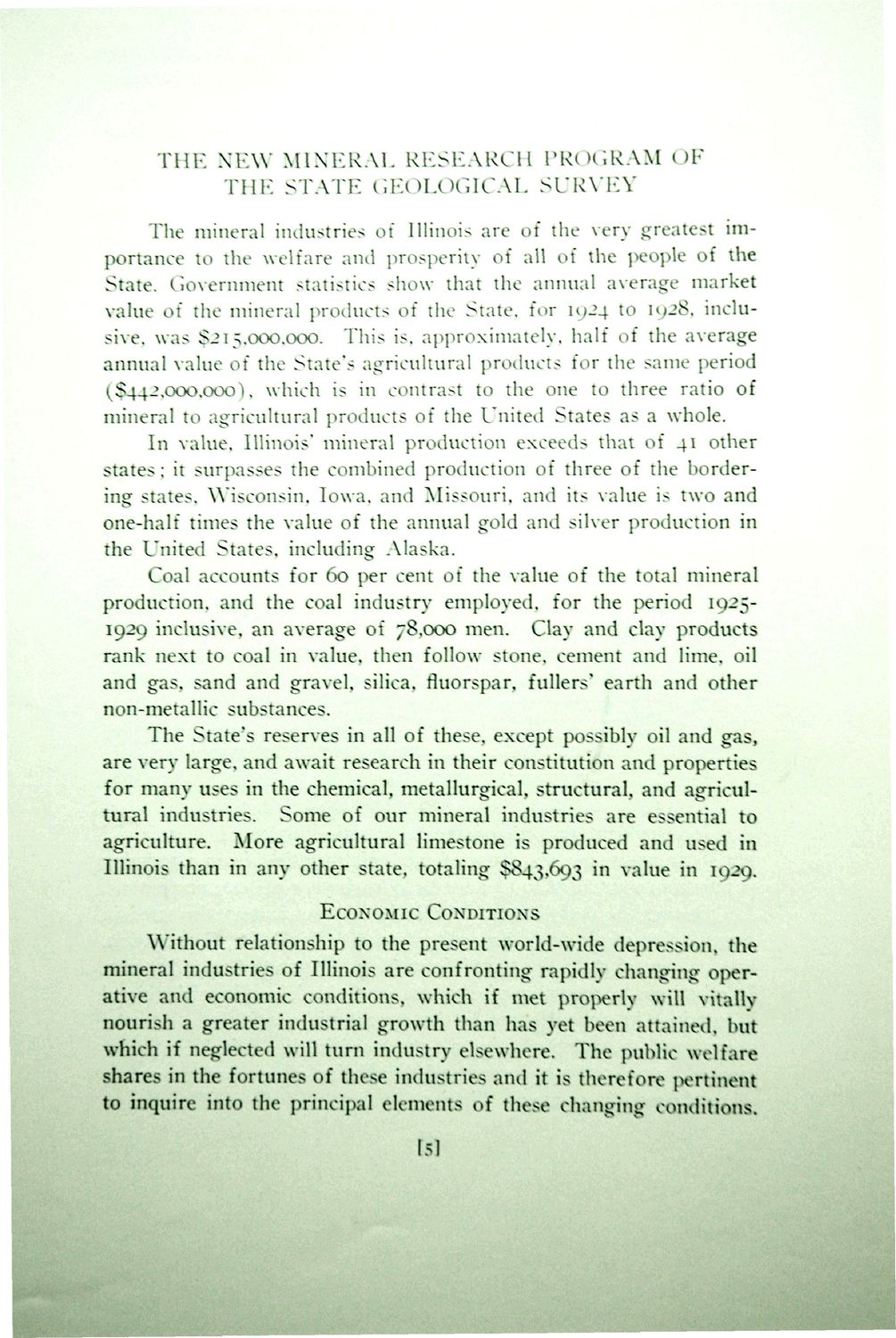| |
| |
Caption: Dedication - ISGS New Mineral Lab
This is a reduced-resolution page image for fast online browsing.

EXTRACTED TEXT FROM PAGE:
T H E N E W M I N E R A L RESEARCH PROGRAM O F T H E STATE GEOLOGICAL SURVEY The mineral industries of Illinois are of the very greatest importance to the welfare and prosperity of all of the people of the State. Government statistics show that the annual average market value of the mineral products of the State, for 1924 to 1928, inclusive, was $215,000,000. This is, approximately, half of the average annual value of the State's agricultural products for the same period ($442,000,000), which is in contrast to the one to three ratio of mineral to agricultural products of the United States as a whole. In value, Illinois' mineral production exceeds that of 41 other states; it surpasses the combined production of three of the bordering states, Wisconsin, Iowa, and Missouri, and its value is two and one-half times the value of the annual gold and silver production in the United States, including Alaska. Coal accounts for 60 per cent of the value of the total mineral production, and the coal industry employed, for the period 19251929 inclusive, an average of 78,000 men. Clay and clay products rank next to coal in value, then follow stone, cement and lime, oil and gas, sand and gravel, silica, fluorspar, fullers' earth and other non-metallic substances. The State's reserves in all of these, except possibly oil and gas, are very large, and await research in their constitution and properties for many uses in the chemical, metallurgical, structural, and agricultural industries. Some of our mineral industries are essential to agriculture. More agricultural limestone is produced and used in Illinois than in any other state, totaling $843,693 in value in 1929. ECONOMIC CONDITIONS Without relationship to the present world-wide depression, the mineral industries of Illinois are confronting rapidly changing operative and economic conditions, which if met properly will vitally nourish a greater industrial growth than has yet been attained, but which if neglected will turn industry elsewhere. The public welfare shares in the fortunes of these industries and it is therefore pertinent to inquire into the principal elements of these changing conditions. [5]
| |